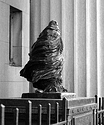musila
Member
- Joined
- May 25, 2010
- Messages
- 30
- Format
- Medium Format
I'm doing a project where I am knowingly overexposing a "scene" and I absolutely cannot help it. This "scene" is also going to result in a low contrast negative. This project is being shot on roll film. I'm curious on what you would think the best way to develop these negs were. I'm thinking of trying split developing, (maybe d23 with a Kodalk bath) or a quick Dektol bath? Develop them normally, and bleach then after? I know the the negs aren't going to be perfect, but I'm trying to get the best I can out of them. The film is Fuji Neopan Arcos 100 because its reciprocity failure rate, if that matters.
Any suggestions?
Any suggestions?






 :confused:
:confused: